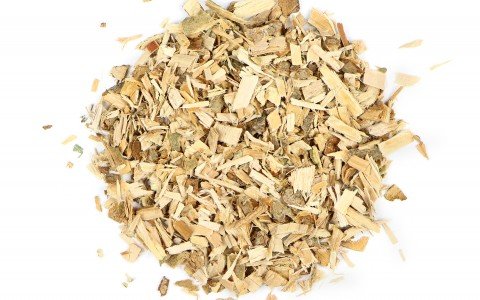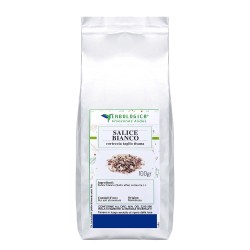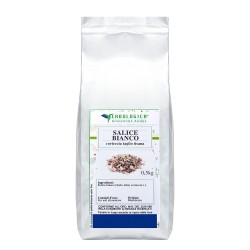
Scopri il potere curativo del tè al salice: Benefici e usi
Se siete alla ricerca di un rimedio naturale per alleviare i vostri disturbi, non cercate altro che la tisana di salice.
Per secoli la corteccia di salice è stata utilizzata per le sue proprietà medicinali e oggi rimane una scelta popolare per chi cerca sollievo da dolori, infiammazioni e altri fastidi.
La corteccia di salice contiene salicina, un composto con effetti simili a quelli dell'aspirina, che la rende un'alternativa naturale ai farmaci antidolorifici da banco.
Bere una tisana di salice è un modo pratico e delizioso per trarre i benefici di questa potente erba.
In questo articolo esploreremo i numerosi usi e benefici della tisana di salice, dalla riduzione della febbre e delle infiammazioni alla promozione del rilassamento e di un sonno migliore.
Quindi, sedetevi, rilassatevi e scoprite il potere curativo della tisana al salice.
Introduzione al tè di salice
Il tè di salice è una bevanda a base di corteccia di salice, che viene utilizzata da secoli per le sue proprietà medicinali.
La corteccia di salice contiene salicina, un composto che ha effetti simili all'aspirina, che lo rendono un'alternativa naturale ai farmaci da banco per il dolore e l'infiammazione.
Il tè di salice può essere bevuto da solo o miscelato con altre erbe per creare una miscela personalizzata.
È disponibile in varie forme, tra cui bustine di tè, foglie sfuse e polvere.
La storia del tè di salice
La corteccia di salice è stata utilizzata per le sue proprietà medicinali fin dall'antichità.
Gli antichi egizi la utilizzavano per alleviare il dolore e l'infiammazione, mentre gli antichi greci la utilizzavano per curare la febbre e il dolore.
Nel 18° secolo, il chimico francese Henri Leroux isolò il principio attivo della corteccia di salice, la salicina, e ne dimostrò l'efficacia nella riduzione del dolore e dell'infiammazione.
Nel 1829, il chimico italiano Raffaele Piria riuscì a isolare l'acido salicilico dalla salicina, e questo fu il precursore dell'aspirina moderna.
I benefici del tè di salice
Il tè di salice offre numerosi benefici per la salute, tra cui:
1. Allevia il dolore
La corteccia di salice è stata utilizzata per secoli per il suo effetto antidolorifico.
La salicina contenuta nel tè di salice agisce come un analgesico naturale, riducendo il dolore e l'infiammazione.
2. Riduce l'infiammazione
Il tè di salice è noto per le sue proprietà anti-infiammatorie. La salicina contenuta nella corteccia di salice aiuta a ridurre l'infiammazione e il gonfiore causati da malattie come l'artrite e la tendinite.
3. Riduce la febbre
La corteccia di salice è stata utilizzata per secoli per ridurre la febbre.
La salicina contenuta nel tè di salice agisce come un antipiretico naturale, riducendo la temperatura corporea e alleviando i sintomi associati alla febbre, come mal di testa e dolori muscolari.
4. Promuove il rilassamento
Il tè di salice può promuovere il relax e il benessere mentale.
Gli effetti calmanti della corteccia di salice possono aiutare a ridurre lo stress e l'ansia e a promuovere un sonno migliore.
5. Migliora la digestione
Il tè di salice può aiutare a migliorare la digestione.
La corteccia di salice contiene tannini, che possono aiutare a ridurre l'infiammazione del tratto gastrointestinale e migliorare la digestione.
La scienza dietro il tè di salice
La corteccia di salice contiene salicina, un composto che viene convertito dal corpo in acido salicilico, il principio attivo dell'aspirina.
L'acido salicilico agisce come un analgesico e un antinfiammatorio, riducendo il dolore e l'infiammazione.
Altri composti presenti nella corteccia di salice, come i tannini e i flavonoidi, contribuiscono alla sua attività anti-infiammatoria e antiossidante.
Come preparare il tè di salice
Il tè di salice può essere preparato in diversi modi, a seconda della forma in cui viene acquistato.
Le bustine di tè di salice possono essere preparate come qualsiasi altra bustina di tè, immergendole in acqua calda per alcuni minuti.
Le foglie sfuse possono essere mescolate con acqua calda e lasciate in infusione per alcuni minuti.
La polvere di corteccia di salice può essere mescolata con acqua calda per creare una bevanda simile al tè.
Ricette di tè di salice
Il tè di salice può essere bevuto da solo o miscelato con altre erbe per creare una miscela personalizzata.
Ecco alcune ricette di tè di salice da provare:
Tè di salice e lavanda
- 1 cucchiaio di corteccia di salice
- 1 cucchiaio di lavanda essiccata
- 2 tazze di acqua calda
Mescolare la corteccia di salice e la lavanda in una tazza.
Versare l'acqua calda sulla miscela e lasciare in infusione per 10-15 minuti. Filtrare e servire.
Tè di salice e menta
- 1 cucchiaio di corteccia di salice
- 1 cucchiaio di foglie di menta essiccata
- 2 tazze di acqua calda
Mescolare la corteccia di salice e le foglie di menta in una tazza. Versare l'acqua calda sulla miscela e lasciare in infusione per 10-15 minuti. Filtrare e servire.
### Tè di salice e zenzero
- 1 cucchiaio di corteccia di salice
- 1 pezzo di zenzero fresco
- 2 tazze di acqua calda
Sbucciare e tritare finemente lo zenzero fresco.
Mescolare la corteccia di salice e lo zenzero in una tazza.
Versare l'acqua calda sulla miscela e lasciare in infusione per 10-15 minuti. Filtrare e servire.
Come scegliere il tè di salice giusto per te
Il tè di salice è disponibile in varie forme, tra cui bustine di tè, foglie sfuse e polvere.
Quando si sceglie il tè di salice, è importante considerare la qualità degli ingredienti e la provenienza del prodotto.
È anche importante scegliere un prodotto che sia adatto alle proprie esigenze. Se si desidera un effetto antidolorifico più forte, ad esempio,
si potrebbe optare per una concentrazione più elevata di salicina.
I migliori posti per acquistare il tè di salice
Il tè di salice può essere acquistato in negozi di erbe, negozi di alimenti naturali e online.
Ecco alcuni dei migliori posti per acquistare il tè di salice:
Erbologica offre una vasta selezione di tè di salice provenienti da diverse marche.
- Erboristerie: le erboristerie sono un'ottima fonte per acquistare tè di salice di alta qualità.
- Negozi di alimenti naturali: i negozi di alimenti naturali spesso offrono tè di salice di alta qualità e altri prodotti a base di erbe.
Il tè di salice come rimedio naturale
Il tè di salice è un rimedio naturale per molti disturbi comuni, tra cui dolore, infiammazione e febbre.
Poiché contiene salicina, un composto con effetti simili all'aspirina, è un'alternativa naturale ai farmaci da banco per il dolore e l'infiammazione.
Bere il tè di salice può anche promuovere il relax e il benessere mentale, migliorare la digestione e promuovere un sonno migliore.
Conclusioni e riflessioni finali
Il tè di salice è un'ottima scelta per chi cerca un rimedio naturale per alleviare il dolore, l'infiammazione e altri disagi.
Con la sua lunga storia di utilizzo medicinale e la sua efficacia scientificamente dimostrata,
il tè di salice è una scelta sicura ed efficace per chi cerca un'alternativa naturale ai farmaci da banco.
Assicurati di scegliere un prodotto di alta qualità e di seguirne le istruzioni per garantire un'esperienza sicura ed efficace.




-250x250.jpg)
